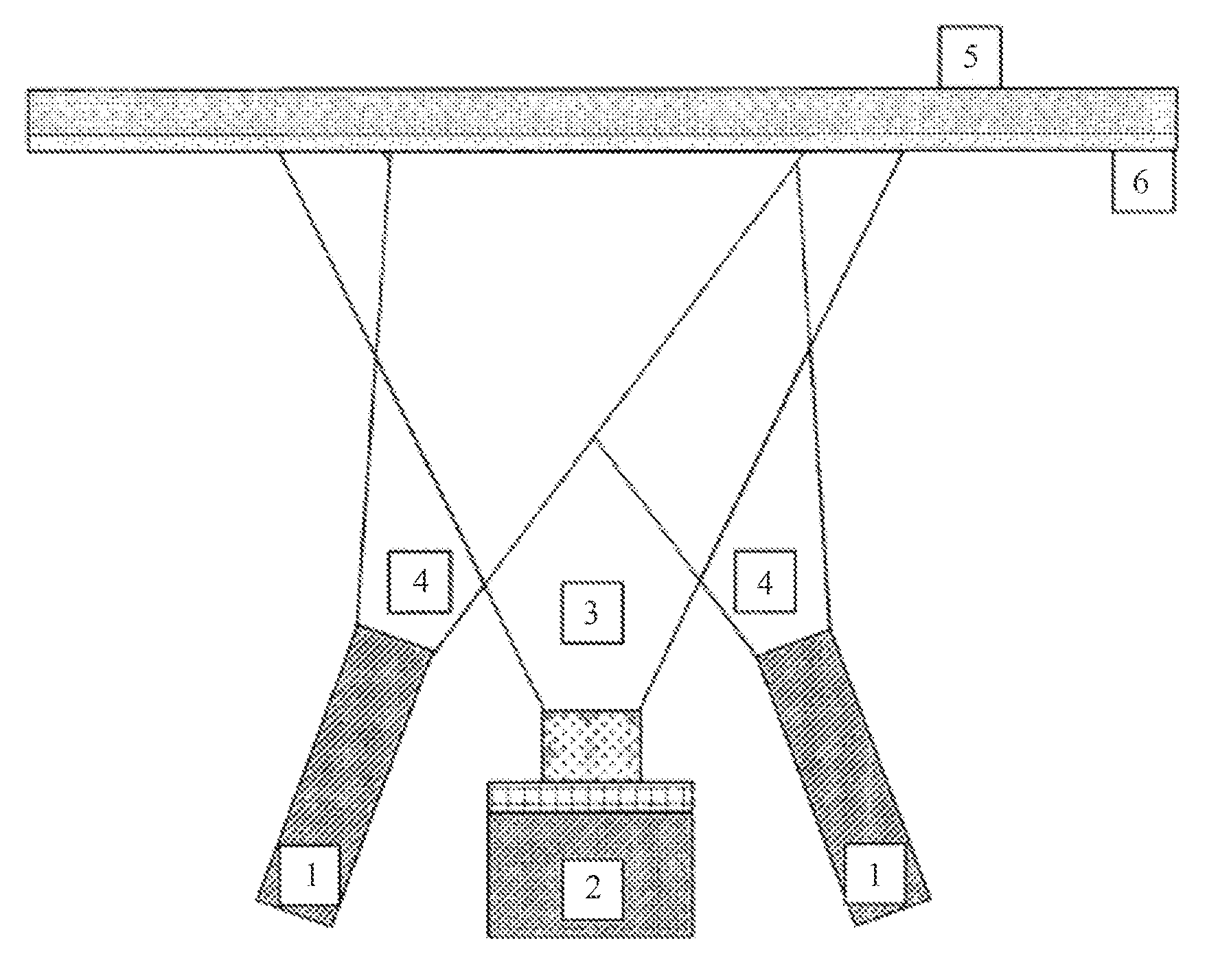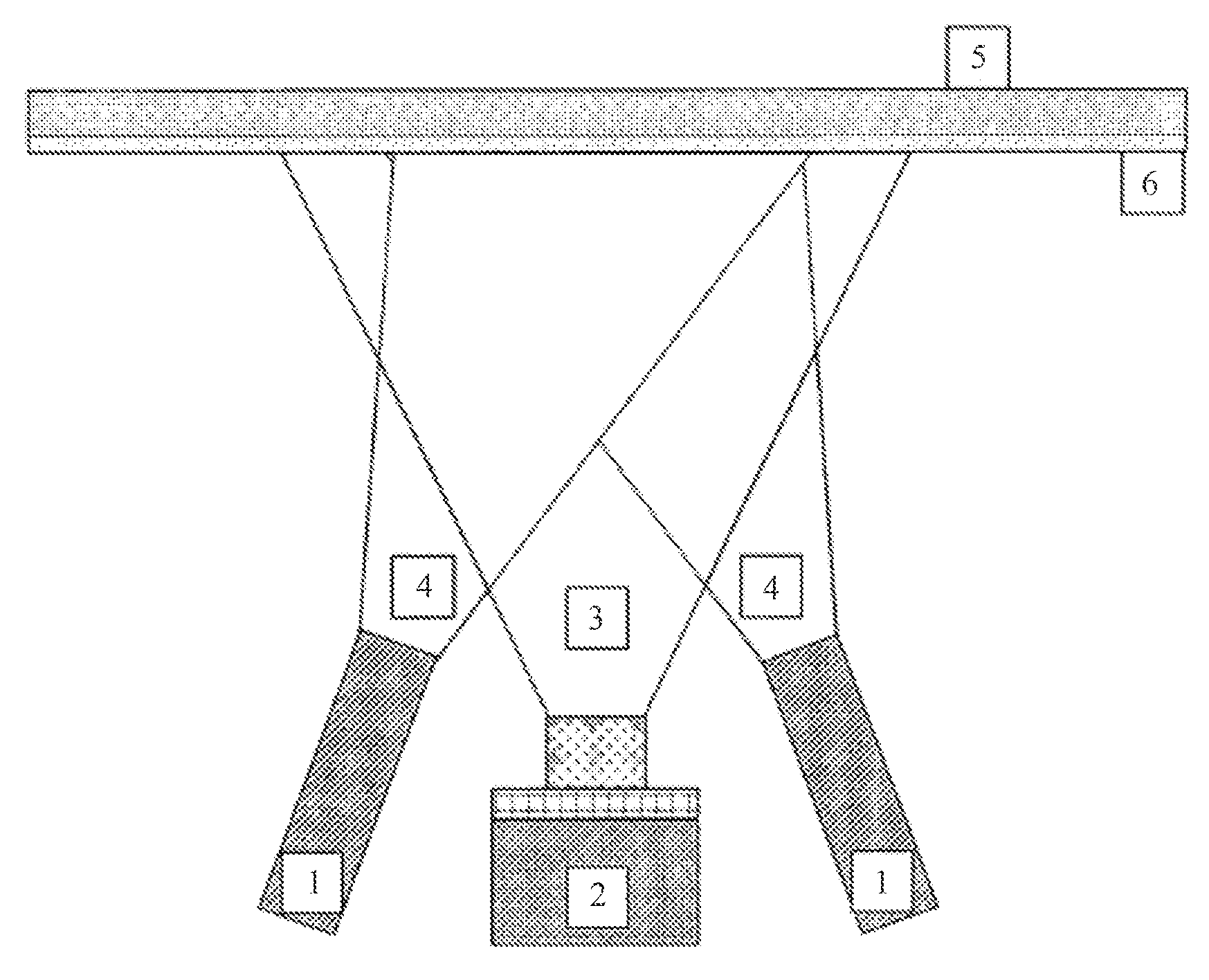Method and device for producing a semiconductor layer
- Summary
- Abstract
- Description
- Claims
- Application Information
AI Technical Summary
Benefits of technology
Problems solved by technology
Method used
Image
Examples
Example
DETAILED DESCRIPTION OF THE DRAWINGS
[0020]The invention is explained in the following using an exemplary embodiment.
[0021]Example of a Procedure of a Method
[0022]A substrate 5 provided with a molybdenum back contact 6 is placed into the coating chamber. The layer thickness of the molybdenum back contact 6 is in the range between 0.5 and 2 μm.
[0023]Now, a Cu(In,Ga)Se2 semiconductor layer is applied in a vacuum process at a pressure between 1·10−6 and 1·10−4 mbar onto the metallic back contact 6. The metallic components from metallic evaporator sources 1 are evaporated at a rate ratio of 0.813 from a low-energy broad-beam ion source 2. The energy of the selenium ions can be selected in the range between 10 and 500 eV.
[0024]The substrate holder is heated in this coating step to a temperature between 400 and 550° C.
[0025]An overlapping of the metal vapor beams and of the selenium ion beam is achieved by the alignment of the metal evaporator 1 and of the beam guidance 4 resulting from it...
PUM
| Property | Measurement | Unit |
|---|---|---|
| Temperature | aaaaa | aaaaa |
| Pressure | aaaaa | aaaaa |
| Pressure | aaaaa | aaaaa |
Abstract
Description
Claims
Application Information
 Login to View More
Login to View More - R&D Engineer
- R&D Manager
- IP Professional
- Industry Leading Data Capabilities
- Powerful AI technology
- Patent DNA Extraction
Browse by: Latest US Patents, China's latest patents, Technical Efficacy Thesaurus, Application Domain, Technology Topic, Popular Technical Reports.
© 2024 PatSnap. All rights reserved.Legal|Privacy policy|Modern Slavery Act Transparency Statement|Sitemap|About US| Contact US: help@patsnap.com









